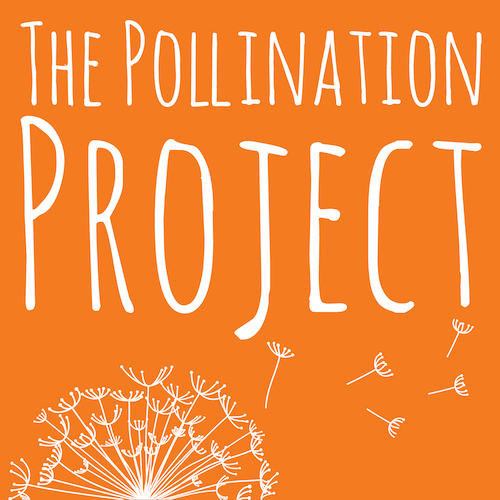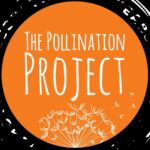Animal agriculture is responsible for 12% of greenhouse gas emissions globally, FAO.
“When I see animals suffering, I can see the pain in their eyes and it hurts me to see animals suffering,” Aanchal Raturi, animal advocate.
There are around 7,000 languages in the world, but there is a language that goes beyond words and species: empathy. The ability to look into someone‘s eyes and understand their feelings is the most unique way of communication, it allows us to go beyond the limitations of our species and comprehend other sentient beings thus acknowledging their emotions and realizing their rights to life, freedom, and wellbeing; whether they are humans or animals. Just like the homo universalis Leonardo da Vinci once said: “A day will come in which men will look upon an animal’s murder the same way they look today upon a man’s murder.” It is precisely empathy that has driven Aanchal Raturi to become an animal activist who has changed the lives of thousands of animals in India.
An Animal Advocate Was Born
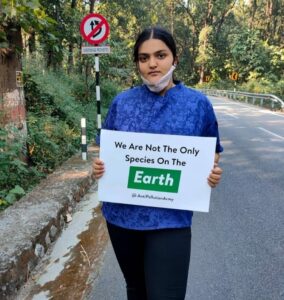 Aanchal is an animal advocate with a postgraduate diploma in Animal Protection Law from NALSAR University of Law in Hyderabad, India. She has a bachelor‘s degree in Agriculture Hons. from the Uttaranchal University, and is currently studying LLB at the DAV College both in Dehradun, India.
Aanchal is an animal advocate with a postgraduate diploma in Animal Protection Law from NALSAR University of Law in Hyderabad, India. She has a bachelor‘s degree in Agriculture Hons. from the Uttaranchal University, and is currently studying LLB at the DAV College both in Dehradun, India.
The young activist was born in Devprayag, a small village in the north of India where the Ganges river begins by the confluence of two rivers. It is a place surrounded by nature, where animals coexist freely. She lived there with her parents and her 3 sisters, but her grandmother from her father’s side, Vidya Vati Raturi, had a big influence on her life and planted the seed of compassion in her soul.
“My grandmother was a teacher and she deeply cared for others,” remembers Aanchal. “She used to convince the parents from the village to allow their daughters to study. She even paid for their school fees and books out of her pocket. She has always thought that education empowered women and helped them thrive to have a better life. In fact, something very beautiful is that her name actually means education.”
It would be Aanchal‘s aunt who introduced her to rescuing animals as a young child while she watched her work.
“My aunt used to rescue animals in Devprayag,” recalls Aanchal. “We did not have any veterinary hospitals there. She would do whatever she could to help animals in need by applying homemade remedies.”
Aanchal was only 6-years-old when she began her journey of rescuing animals. She remembers how she cared for a bird whom she named Tweety.
“In the village, we lived among nature so there were a lot of birds,” says Aanchal. “I remember we rescued a little bird and we would feed it every 2 hours, but it didn‘t survive. Tweety did not make it. We felt very sad about that but we continued to rescue animals there.”
A New City, a New Challenge
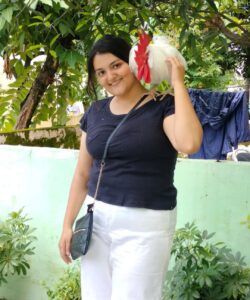 When Aanchal turned 13, she and her family moved to Dehradun – the capital of Uttaranchal and the biggest city in the state. There, she found many animals in need of rescue and she just couldn‘t look away. Using her resources, she has helped as many animals as possible from cats to pigs, chickens, cows, horses, squirrels, mice, and even bugs, among others.
When Aanchal turned 13, she and her family moved to Dehradun – the capital of Uttaranchal and the biggest city in the state. There, she found many animals in need of rescue and she just couldn‘t look away. Using her resources, she has helped as many animals as possible from cats to pigs, chickens, cows, horses, squirrels, mice, and even bugs, among others.
“I have been working in rescues for the last 10 years now and I know everybody in the rescue community in my city, so I try to delegate,” says Aanchal. “For example, if I find a paralyzed dog, I know which shelter has had experience with paralyzed dogs. I only take cases where I feel like nobody else can take care of them. There is nobody in Dehradun that’s working on neonatal kittens, so I take them in. I also put a special effort into helping paralyzed cats and farm animals. I care for them and put them out for adoption.”
At 18-years-old, Aanchal learned about the animal cruelty behind dairy, and she decided to become vegan as another way to show her solidarity and respect towards animals.
“After I saw footage on the cruelty animals are subjected to produce dairy, I could not consume it anymore,” says Aanchal. “There was a cup of tea in my hand and I could not finish it. I just gave up on dairy then and there. I got to know about veganism and I adopted it.”
Even though Aanchal helped many animals over the years, she felt there was more she could do to increase her advocacy.
“No matter how much I worked on animal rescues, I felt there was something missing,” says Aanchal. “I thought: Why can’t I make a difference? Later, I got to know about the Ahinsa fellowship, a program of 9 months where this organization would teach us about animal protection law in India. I wanted to work on farm dynamics in the country because I thought this would allow me to work on a larger scale. Instead of saving one dog, I could use the same resources and time to rescue maybe 1,000 chickens if I worked to help farm animals. So I applied for this fellowship and I did not expect to get selected because I did not know anything about the law but I got selected and went to Kedarnath as an intern and later I was hired as an Assistant Manager.”
Advocating for Horses In Kedarnath
Kedarnath is a holy Hindu town located in the Himalayas, 3,583 meters above sea level with a temple that is an important pilgrimage site. In 2021, over 243 thousand people visited the sacred site, according to Statista.
Unfortunately, these numerous visitors have generated a cruel industry: horse exploitation. Every day thousands of horses are used to take people and heavy cargo up the track under extreme circumstances, something Aanchal was determined to change.
“I went to do animal advocacy in Kedarnath,” says Aanchal. “It’s a holy place and there is a 16-kilometer track very difficult to walk, so they use horses, locals rent them. In my last job, I was Assistant Manager for the working animals in a project in Kedarnath and – obviously – I filed several contempt cases to the District Magistrate and other authorities who were responsible because there was no animal shelter there. And let me tell you, there were at least 10,000 horses on the track even though only 5,000 were allowed by law. That’s what the High Court of our State had ordered, but 10,000 horses were working on the track when I went there. I could see horses dying in front of me. I was there on an undercover investigation, but when I saw these animals dying in front of me I could not be undercover anymore. I had to go to the police. I went ahead and did a lot of affairs for cruelty cases on these animals and that became national news. Thanks to that, we were able to make a hospital for animals there and a new set of guidelines for the use of horses on the track.”
Although her work in Kedarnath was meaningful, Aanchal thought that instead of trying to solve an existing problem, she could use her agricultural background to prevent animal cruelty in animal farming.
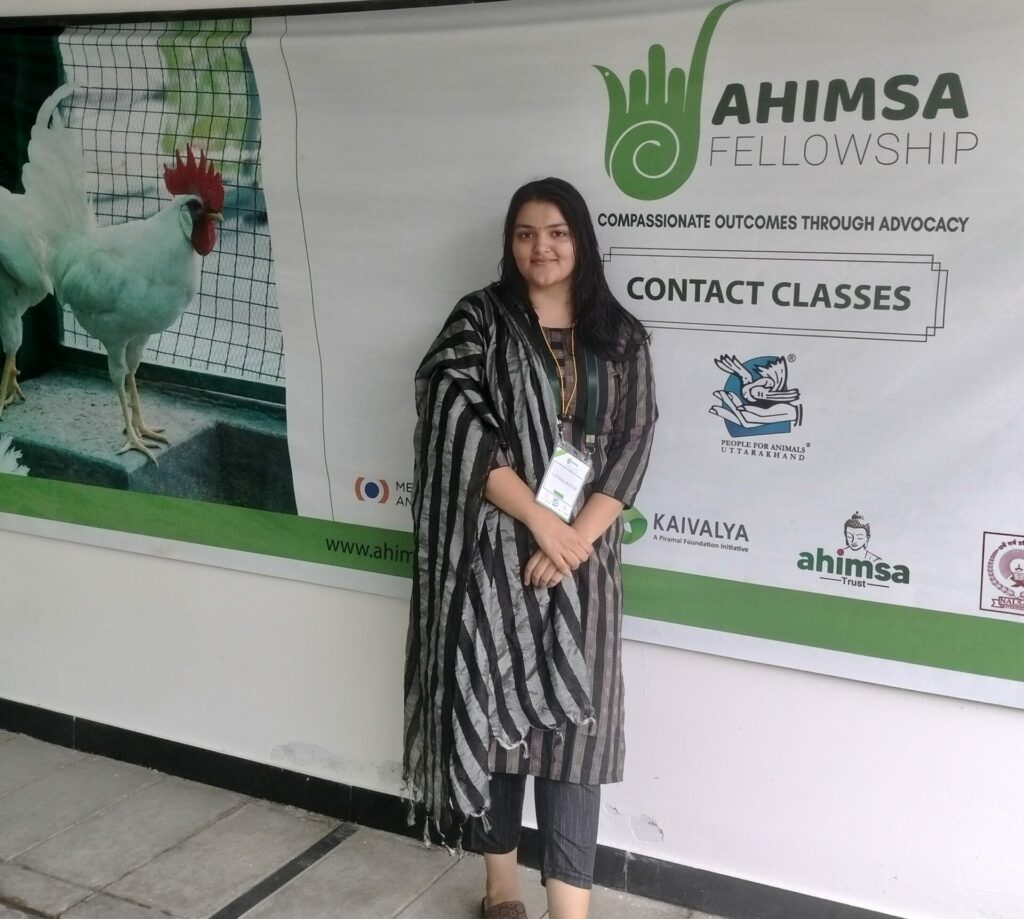
Animal Agriculture and Climate Change
Each year 92 billion land animals are bred, raised, and killed for consumption around the world, according to the Humane Society. Furthermore, the industry is cruel not only because of the killing of animals but because of the conditions in which animals live before they are slaughtered: in unsanitary enclosures, confined in small spaces, forced to grow unnaturally fast and to take antibiotics to survive these hardships, according to The Humane League.
Yet, besides the unethical implications of animal agriculture, a study conducted by Faunalitics and Sentient Media revealed that only 7% of 1,000 articles on climate change addressed the connection of this problem with animal farming, and the problem is big.
In fact, animal agriculture of cattle, buffaloes, sheep, goats, pigs, and chickens is responsible for 12% of GHG emissions globally, according to the Food and Agriculture Organization of the United Nations with data from 2015. Additionally, cattle emit 60% of the livestock’s greenhouse gases, and in the case of animal products – like meat, milk, and eggs – two-thirds are caused by meat production.
The organization projects that if decisive actions to lower animal product consumption are not taken, by 2050 the animal product demand will grow by 20% and this will contribute to global temperature increases.
Working Through Education to Help Animals
 After much thought, Aanchal decided to follow her grandmother’s footsteps and use education to make a positive change in the world. She remembered the impact that her Animal Agriculture class had on her while she was in college.
After much thought, Aanchal decided to follow her grandmother’s footsteps and use education to make a positive change in the world. She remembered the impact that her Animal Agriculture class had on her while she was in college.
“In my second year of college, there was a subject called Animal Agriculture and it would just disturb me a lot the way that teachers used to talk about animals. It was as if they were talking about tomatoes. There was no difference between vegetables and animals; the students were getting inspired, but for the wrong reasons,” remembers Aanchal.
So she decided to create Project Re-Learn, a 3-hour workshop to sensitize future agricultures about ethical practices with animals to inspire them to work towards more plant-based industries in the future.
“I want to introduce animal protection law and animal welfare laws to them before they are introduced to animal agriculture, so that when they attend the class they can have a better and more ethical option, to recognize animals as sentient beings,” says Aanchal. “Through Project Re-Learn, I will design a curriculum around the syllabus for second-year students and I am going to introduce the same thing they will be learning but from a legal perspective and sensitive perspective so they can understand it from the animals’ point of view.”
Reaching Out to The Pollination Project
Aanchal plans to visit 20 colleges where she will impact over 150 students in each university across the state of Uttaranchal, India. Besides the workshop, she also will take the students on field trips to animal sanctuaries.
“I want them to hear firsthand the stories of how animals are rescued so they can see the pain in the animals’ eyes,” says Aanchal. “We have to convince students that this is unethical and that an animal goes through a lot of suffering just for us to have a glass of milk or some meat. My focus is that agriculturists can change the world. I am trying to build compassionate agriculturists.”
In order to make this project happen, Aanchal reached out to The Pollination Project for the funds required to pay for the trips and all the educational material she will use in the workshops.
“I found out about The Pollination Project through one of my friends at the Ahinsa fellowship,” remembers Aanchal. “I applied but I thought it would be hard for someone else to understand my project because it is a very personal vision. But, when I got the approval email, I was very surprised. I was more than happy because I would be able to make it happen. I felt like I was seen.”
Aanchal expects to create her organization for animal advocacy next year, meanwhile, she is looking for people who will share her values to make a difference in connecting with all sentient beings through empathy and compassion.
Join Us
If you are inspired by this work and have an idea for a project that addresses an issue that you are passionate about, we’d like to invite you to submit an application and together we will build a better, more compassionate future!
If you would like to support the work of more heartivists like this around the world, please visit our donation page and be a part of the change today!
